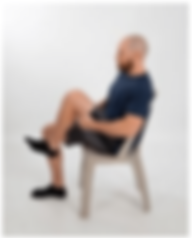What is Causing Your Hip Pain? Arthritis? How to Tell
- chelsie462
- Aug 4, 2023
- 3 min read
Hip arthritis is damage to the cartilage inside the hip joint. The damage may be done to the cartilage on the ball of the shoulder joint or the socket of the shoulder joint. The cartilage is like a Teflon coating on the joint. Hip arthritis is a gradual wear and tear of the cartilage.
Signs and Symptoms of Hip Arthritis
One of the most common signs of arthritis in the hip is pain and stiffness. Hip pain may come and go without an apparent pattern and it may be worse with standing and lying on the painful hip. If the hip joint is flared up the pain may be nearly constant for a while. Common pain patterns for hip pain are: Pain and stiffness felt on the front or the outside of the hip. Hip pain may also be felt in the groin. Hip problems can also refer to or spread pain into the outside thigh or front thigh towards the knee. Hip pain is generally not felt in your back, buttock, or back of the thigh. Hip problems generally do not cause pain beyond the knee and generally do not produce numbness or tingling in the legs.
Sounds of grinding, clicking, or cracking are common with hip arthritis. The cartilage (Teflon Coating) has begun to wear, and it has become irregular (no longer smooth). Sometimes the hip can even feel like it is locking up.
One of the best ways (besides X-rays or scans) to assess for possible arthritis in the hip is to look at the hip's range of motion. If your hip motion is limited due to arthritis it often follows a pattern.
One of the first signs of arthritis in a hip joint is loss of hip internal rotation. Next, it is not uncommon to experience a loss of hip flexion followed by a loss of hip abduction. We will show you how to compare the motion of the affected hip to the unaffected hip.
How to compare:
Hip Internal Rotation: Sit on a higher chair or surface with your legs dangling. With your knees together rotate your ankles out to the side as far as your legs will allow. Compare the motion of each.

Hip Flexion: Stand with side to counter and steady yourself with your hand. Flex the affected hip (leg) up to your chest. Repeat with the unaffected hip (leg). Compare the motion of each.

You can also test hip flexion in a seated position. Flex the affected hip (leg) as high as possible toward your chest. Repeat with the unaffected hip (leg).

Hip Abduction. Lie on your back. Slide affected hip (leg) out to the side as far as able with toe raised to the ceiling. Repeat the motion with the unaffected hip (leg). Compare the motion of each side.

To repeat- with arthritis, the first measurement “hip internal rotation” tends to be the worse. The second most affected motion tends to be “hip flexion”. The third most affected tends to be “hip abduction”.
Five signs you may have hip arthritis:
1. Squatting tends to aggravate your hip.

2. When you flex your hip in the seated or standing position you feel increased pain on the side of your hip.

3. Lie on your back. Flex your affected hip (leg) until your thigh is vertical and the knee is at a right angle. (see photo). Grab your knee with both hands and pull the leg directly down (like you are trying to drive your upper thigh into your pelvis. (see photo). While pulling the leg down direct your hands to the opposite leg (you are adducting the hip). An arthritic hip may experience pain in the groin or outside of the hip.

4. In a standing position hold on to a counter and extend the affected hip directly back. An arthritic hip may feel pain.

5. Hip internal rotation may be limited to less than 25 degrees of motion. Test already mentioned earlier in this section. Hip Internal Rotation: Sit on a higher chair or surface with your legs dangling. With your knees together rotate your ankles out to the side as far as your legs will allow. Compare the motion of each.

(If you have 4 or more signs of hip arthritis- you have a 91 percent chance of having it)
Check out the full Hip Pain Relief Program series of videos along with downloadable guide sheets for each video on our website here: https://www.bobandbrad.com/health-programs/hip-pain-relief-program















תגובות